Thoughts on RooBadge?
2 April 2024 2:55pm
8 April 2024 12:49am
That is an interesting concept, and it would be great if something out there worked. In the meantime, I will try not to drive at dusk 🦘
At one point, I knew the "sonic" animal guards were the most stolen components of cars. You head in, get groceries, and come out, and they are gone. They weren't on the car long enough for me to confirm that would work
20 April 2024 2:40am
Totally agree.
Inititally sceptical until I saw Helena and Graeme were involved.
MJ
Waterproofing DIY VHF transmitter
27 March 2024 8:57am
19 April 2024 6:26pm
You already got lots of responses, but since you asked about SnapperGPS, I thought I'd add some of my experience.
A few people mentioned 3D printed cases. If it's filament based, it won't be good enough to be submersed, but probably would hold up on a deer, provided you use a gasket or o-ring and clamp it shut, like others have mentioned here. Here's a chunky one I made that I zip-tied to my backpack for tests:
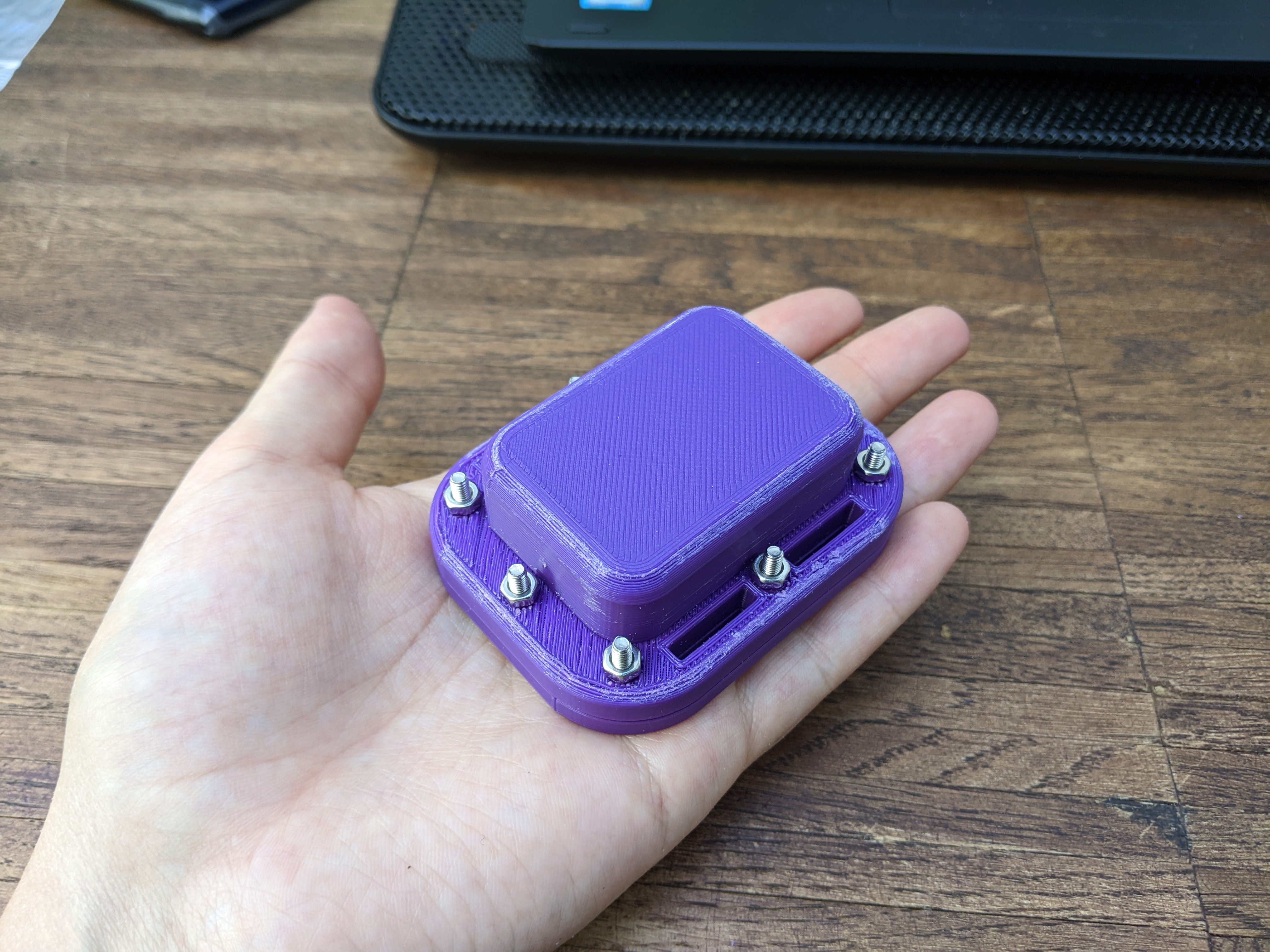

Probably too chunky for what you're doing. As mentioned by others, resin printed housings would generally be better than filament printed ones.
You also already got some good notes on heat shrink tubing and your test looks good! Although I'm not sure how you sealed the ends there?
I made a version of SnapperGPS to go on sea birds and those were heat shrunk. After shrinking the plastic with a heat gun, the ends were sealed by clamping them (while still hot) with needle noose pliers or an (unplugged) straightening iron. Then the very ends were sealed with some super glue just to be safe. I learned this from the OxNav group.
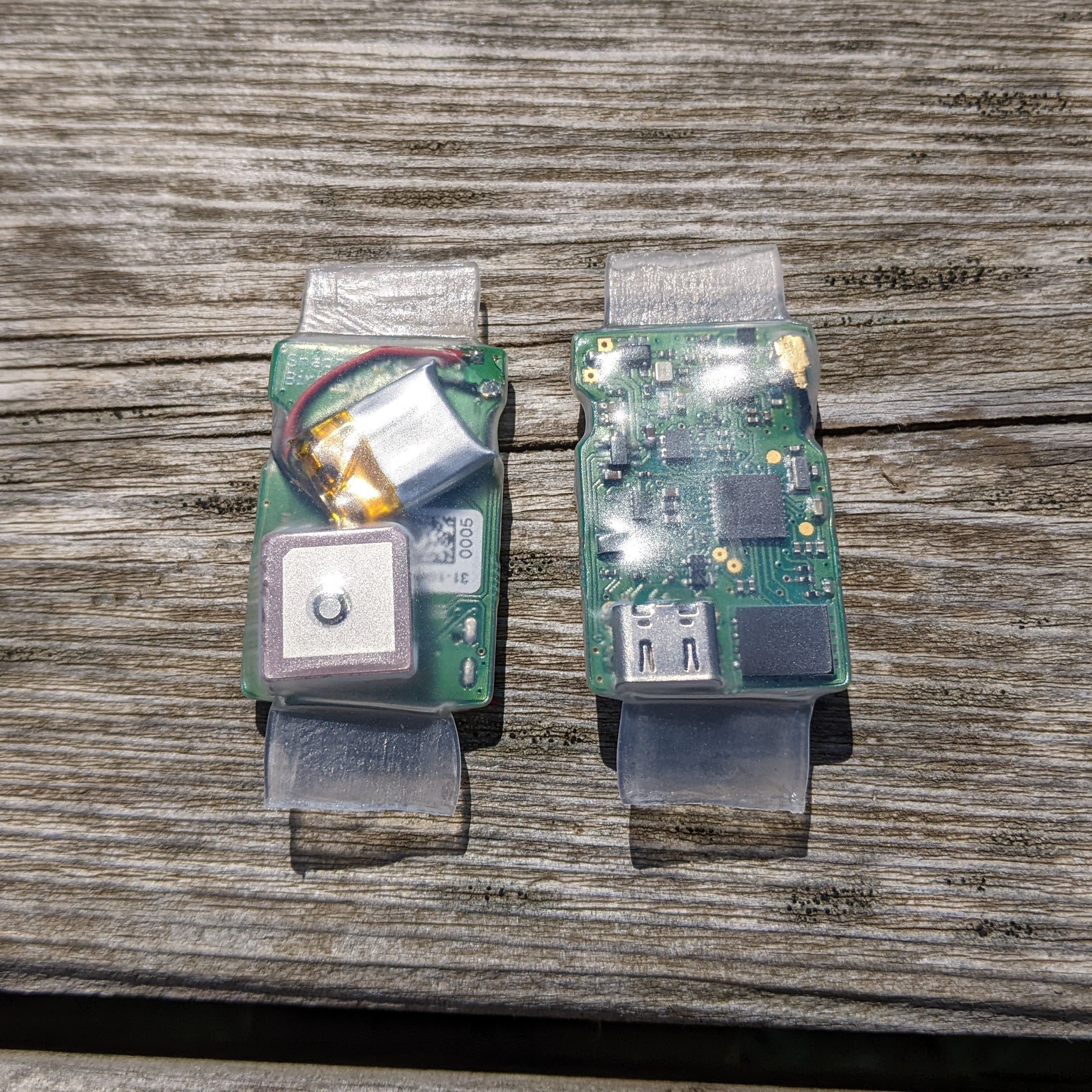
I have also done tests with a food vacuum sealer. It actually works well, but the standard sous-vide plastic is less sturdy than heat shrink. I haven't experimented much with other materials, but it can seal lots of plastics in my kitchen.
Maybe this helps you or others!
19 April 2024 6:28pm
For my work with sea turtles, I had some custom cases machined out of polyoxymethylene and aluminium. They also screw shut and have an o-ring. This is loosely based on an Arribada design.
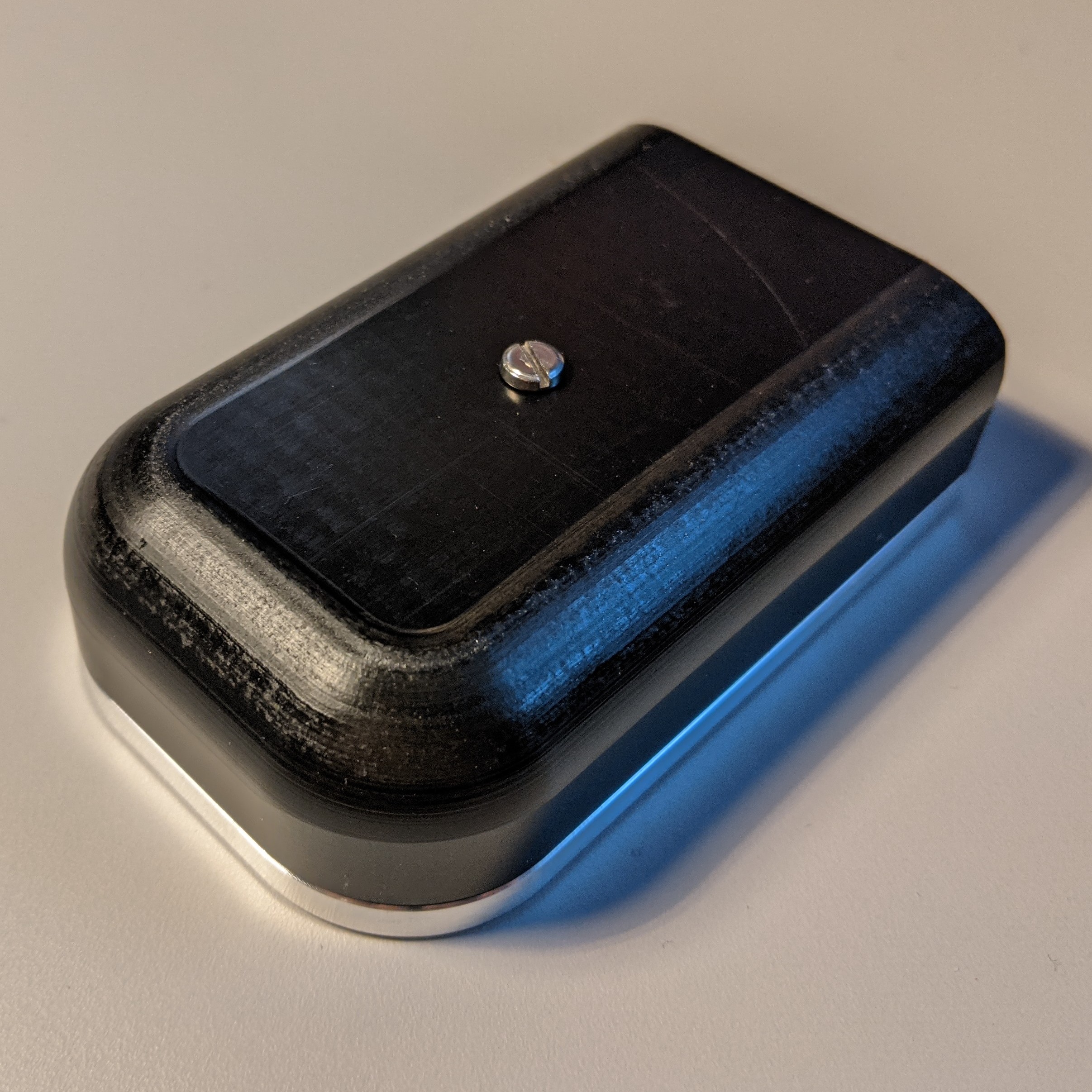
19 April 2024 7:51pm
Thank you so much Amanda!
Very cool!
Fully-retrievable Satellite Tags for Seals?
10 April 2024 4:49pm
12 April 2024 7:25pm
Thanks, Wade! I think a number of these concerns are for pristine environments where cultural norms prohibit leaving anything on the land unnecessarily. It definitely touches on the intersection of communities wanting to conduct science, while respecting traditional knowledge and laws which I feel would be a great direction to push the field.
19 April 2024 4:40pm
Hi Courtney,
One challenge for auto-detaching tags on seals is kind of logistical/financial rather than technical. A floating tag requires a vessel to go retrieve it, and since seals may venture pretty far out to sea, it might require a pretty substantial vessel. Many seal projects I've worked with don't even have boats as a regular part of their work, so this could require a significant increase in operational costs and/or efforts. Not impossible of course, just a consideration.
Wildlife Computers has a remote-controlled release mount for seals, which would allow you to wait until they're on shore to drop it off, obviating the need for a boat. This still does leave some material behind. Making a predictable/controllable release mechanism that wouldn't leave something behind is quite a challenge for seals, where epoxy to the fur seems to be the most reliable attachment method.
19 April 2024 6:46pm
Hello @CourtneyShuert
If I am not mistaken, Wildlife Computers was developing or has developed a remote release package for such an application as has a much smaller company, Desert Star Systems. I do not know where either company stands in terms of functionality, but I think for both cases the animal still has to carry some kind of an attachment plate that will eventually be shed off. In theory (purely theory) and assuming a product exists, you/they could consider adapting the material of the plate to something that is 'sustainable' and not plastic or similar.
(edit: I noticed Kyler linked the WC product above)
Newt belly pattern for picture-matching
18 April 2024 3:57pm
19 April 2024 10:10am
Quizmaster @HRees, what do you reckon?
19 April 2024 10:31am
19 April 2024 4:14pm
Hi Robin this is a great idea! Have been thinking about approaching the community for quiz questions. Will reach out to Xavier to ask if we can use it or if he wishes to run it on next Wednesdays VH
4th International workshop on vocal interactivity in-and-between humans, animals, and robots
19 April 2024 3:03pm
WILDLABS AWARDS 2024 - Fostering bat conservation and citizen science in Zimbabwe: Establishing bat groups and training individuals to use bat detectors
4 April 2024 12:12pm
4 April 2024 7:44pm
Awesome project!!
My own curiosity here - how many different bat species are there in Zimbabwe?
8 April 2024 9:29am
Thank you Carly!
We have over 60 bats recorded in Zimbabwe
19 April 2024 2:16pm
Abigail. I would love to know more and potentially support the initiative. Please send me more info on [email protected]
Mass Detection of Wildlife Snares Using Airborne Synthetic Radar
7 January 2024 6:50am
19 April 2024 8:40am
Sorry, been busy and only saw this message now. Definitely am interested you can WhatsApp me 072 4725318
19 April 2024 1:22pm
I appreciate the technology, especially considering the ongoing issue of snaring. I'm intrigued to see how it will be adapted to function effectively in the dense, closed canopy rainforest, where poachers often deploy nylon snares. Please let me aware incase it will operate in this environment and the nature of the snares. More chats, +255765526628
19 April 2024 1:52pm
In my experience, the preference for trapping animals using different types of snares varies depending on factors such as traditional customs, geographical location, availability and accessibility of materials, terrain, ease of transporting materials, and the type of animal targeted, ranging from buffaloes to medium or small-sized antelope. Based on my experience working in open woodland savannah protected areas (where poachers prefer using wired snares to hunt big game and even small game) and in closed canopy rainforests (where poachers prefer using nylon snares to hunt medium to small-sized antelope). It would be great if the technology will be modified to be capable of detecting both types of snares.
WILDLABS AWARDS 2024 – MothBox
15 April 2024 5:06am
18 April 2024 10:39am
Already an update from @hikinghack:
19 April 2024 12:00pm
Yeah we got it about as bare bones as possible for this level of photo resolution and duration in the field. The main costs right now are:
Pi- $80
Pijuice -$75
Battery - $85
64mp Camera - $60
which lands us at $300 already. But we might be able to eliminate that pijuice and have fewer moving parts, and cut 1/4 of our costs! Compared to something like just a single logitech brio camera that sells for $200 and only gets us like 16mp, we are able to make this thing as cheap as we could figure out! :)

19 April 2024 12:54pm
Gotcha, well I look forward to seeing future iterations and following along with your progress!!
IgotU
29 February 2024 2:12pm
15 March 2024 1:01pm
Fantastic Nigel! Bummer to hear that production has stopped, but glad you are getting their remaining boards! I know where to come when I need some!
Cheers,
Rob
22 March 2024 12:32pm
I have couple of good use cases for this model in a conservation project here in Cambodia however limited by lack of funding. Would be happy chat if you are interested.
19 April 2024 12:27pm
I'll find you some. Just organising all of our stock of these.
Technology Trends that Would Drive Business Innovation in 2024
19 April 2024 9:27am
The rapidly evolving digital landscape and its fusion with business operations has given rise to a new buzzword: Digital Transformation. Therefore, there’s been an urgent imperative for organizations to adopt digital technologies to stay competitive. The link provides insights into technological advancements that organizations should embrace
Variety Hour: What do you want to see?
15 September 2022 12:46pm
17 April 2024 7:53pm
Steph, yes, I gathered as much myself, but I still wanted to put it on the agenda. It links to the bigger problem in nature conservation, and especially funding : all projects are required to be effective and successful, scalable, profitable and so on (not to mention the paper trail that applicants need to produce to prove it ). It makes sense from the donors' perspective, because if a project is not at least one of these, then it is a waste of money an how do they explain that to the public and the donors' donors. On the other hand, the IMHO ( H for honest ) over emphasis on this requirement is counterproductive and it does not fit in the world of tech development.
To start with the latter, as we all know, in the world of tech VC and startups, people are very used to the idea that a tech invention is not successful. I've read that if you haven't had two failed startups behind you, you're a better contender with your next one. 9 Out of 10 will fail and the remaining one will more than make up for the loss, is the idea. This way of looking at projects fits very well in this tech oriented forum.
Then the counter productive part : with a funding climate like that, who is going to take risks with tech development for nature conservation? Seriously, anybody reading this: if you raise your hand, please do get in touch, because I am curious how you look at the issue and how you deal with it. Whereas I do agree that nature conservation as a whole needs to be successful, I don't believe that the sponsors' stress on it for individual projects is successful itself. Nature's degradation has developed so far ( call me a pessimist ), that we need to take risks and find out if ( and hope that ) what works for silicon valley can work for nature.
Kudos for your attempt at the 'Technical difficulties'. I didn't know about it. Maybe we ( but I mean you, of course ;-) can tinker with the formula. Ask people to talk about how they overcame problems in some detail, because then it is a success story again. ( They could earn a badge! ) And if the recording is an issue, then don't record, or work on anonymity with temporary accounts, TOR, voice scramblers and the camera off. Maybe people are willing to write about their failures instead of doing a live presentation. That way, one has absolute control over anonymizing individuals and hiding the project from being identified. Little risk of a slip of the tongue.
18 April 2024 12:57pm
Thanks for your thoughts on the importance of sharing more about failure in our unique sector. You bring up some very valid points @Frank_van_der_Most and I think the perspective of 'learning by doing' is quite essential. I've shared below some stories I've covered from our East Africa community that touch on this and the perspective that has emerged has been on learning from these experiences and developing with more insight to solve conservation challenges more effectively. I hope you will find these interesting and useful.
19 April 2024 8:06am
Hi @Frank_van_der_Most,
great point and I will address this in my little talk next week.
Greetings from Austria,
Robin
Involve our young learners in climate change action.
27 March 2024 3:24pm
5 April 2024 4:01pm
Hi Cathy
I can't help personally but on seeing your post reached out to a contact who's previously been involved in the British Cartographic Society in case they had any ideas. Their advice:
"I would suggest that she becomes a member of British Cartographic Society (£45 or so) and then writes for/becomes an editor. Then, she will be able to apply for a funding budget for travel... as long as she also writes about the conference! It's a bit long winded, but I am sure that just being an Editor would be an advantage to her anyway."
I hope that helps (or that you find an easier way to get to the conference :D ) - good luck!
Here's their website -
6 April 2024 7:50pm
Thank you so much for this!
18 April 2024 11:40pm
I got assistance. super grateful!
Webinar: Bats and Wind Energy
18 April 2024 6:11pm
The Variety Hour: April 2024
18 April 2024 2:50pm
Mothbox v3.2 Updates - Solar, HDR, Wifi Hotspots, and More!
18 April 2024 4:58am
Become a WILDLABS group manager!
17 April 2024 7:36pm
WILDLABS AWARDS 2024 - No-code custom AI for camera trap species classification
5 April 2024 7:00pm
8 April 2024 5:29pm
Hi Michelle! Right now we're focused on species identification rather than counts of animals.
When you say timelapse images, is this a certain format like bursts? Curious to understand more about your data format
10 April 2024 3:55am
Happy to explain for sure. By Timelapse I mean images taken every 15 minutes, and sometimes the same seals (anywhere from 1 to 70 individuals) were in the image for many consecutive images.
17 April 2024 5:53pm
Got it. We should definitely be able to handle those images. That said, if you're just looking for counts, then I'd recommend running Megadetector which is an object detection model and outputs a bounding box around each animal.
Early Warning Systems for Human-Wildlife Conflict, Zoonotic Spillover, and Other Conservation Challenges
17 April 2024 5:43pm
Fauna & Flora: Bridging geospatial data and people together for enhanced conservation management
17 April 2024 11:31am
TagRanger: Redefining animal tracking iwth ad-hoc wireless networks and software-defined technology
17 April 2024 11:22am
Faces, Flukes, Fins and Flanks: How multispecies re-ID models are transforming Wild Me's work
17 April 2024 11:10am
Pytorch-Wildlife: A Collaborative Deep Learning Framework for Conservation (v1.0)
21 February 2024 10:30pm
26 February 2024 7:38pm
Hello @hjayanto , You are precisely the kind of collaborator we are looking to work with closely to enhance the user-friendliness of Pytorch-Wildlife in our upcoming updates. Please feel free to send us any feedbacks either through the Github issue or here! We aim to make Pytorch-Wildlife more accessible to individuals with limited to no engineering experience. Currently, we have a Huggingface demo UI (https://huggingface.co/spaces/AndresHdzC/pytorch-wildlife) to showcase the existing functionalities in Pytorch-Wildlife. Please let us know if you encounter any issues while using the demo. We are also in the process of preparing a tutorial for those interested in Pytorch-Wildlife. We will keep you updated on this!
26 February 2024 11:58pm
This is great, thank you so much @zhongqimiao ! I will check it out and looking forward for the upcoming tutorial!
17 April 2024 11:07am
Hi everyone! @zhongqimiao was kind enough to join Variety Hour last month to talk more about Pytorch-Wildlife, so the recording might be of interest to folks in this thread. Catch up here:
WILDLABS AWARDS 2024 - BumbleBuzz: automatic recognition of bumblebee species and behaviour from their buzzing sounds
12 April 2024 8:37am
12 April 2024 8:41pm
Super great to see that there will be more work on insect ecoacoustics! So prevalent in practically every soundscape, but so often over-looked. Can't wait to follow this project as it develops!
17 April 2024 10:23am
Thanks Carly! I will keep anyone interested in this project posted on this platform. Cheers
Camera Trap storage and analyzing tools
16 April 2024 5:15pm
16 April 2024 7:17pm
I don't have an easy solution or a specific recommendation, but I try to track all the systems that do at least one of those things here:
https://agentmorris.github.io/camera-trap-ml-survey/#camera-trap-systems-using-ml
That's a list of camera trap analysis / data management systems that use AI in some way, but in practice, just about every system available now uses AI in some way, so it's a de facto list of tools you might want to at least browse.
AFAIK there are very few tools that are all of (1) a data management system, (2) an image review platform, and (3) an offline tool. If "no Internet access" still allows for access to a local network (e.g. WiFi within the ranger station), Camelot is a good starting point; it's designed to have an image database running on a local network. TRAPPER has a lot of the same properties, and @ptynecki (who works on TRAPPER) is active here on WILDLABS.
Ease of use is in the eye of the beholder, but I think what you'll find is that any system that has to actually deal with shared storage will require IT expertise to configure, but systems like Camelot and TRAPPER should be very easy to use from the perspective of the typical users who are storing and reviewing images every day.
Let us know what you decide!
17 April 2024 1:55am
Can't beat Dan's list!
I would just add that if you're interested in broader protected area management, platforms like EarthRanger and SMART are amazing, and can integrate with camera-trapping (amongst other) platforms.
Lotek Telemetry Talks Presents: Tagging Owls – Tips & Tricks from the Experts
16 April 2024 8:26pm
EDGE Fellowship 2025-2027
16 April 2024 3:16pm
Welcome to WILDLABS!
29 October 2015 5:16pm
11 April 2024 8:00am
LOL, GIFs make communication so much cooler!!! I wonder if we have a tech4wildlife GIF? That would be super cool!
11 April 2024 8:03am
Amazing, very well put Talia!
16 April 2024 2:27pm
Hello everyone!
I'm thrilled to join this dynamic community of innovators and explorers. My name is Latifa, and I bring passion for adventure, a love for nature and a deep curiosity for the wild world around us.
With a background in Environmental Disaster Management, I'm excited to join and collaborate with each of you. As for now am working with a local NGO in Tanzania (LEAD FOUNDATION). I'm eager to contribute my skills and learn more from everyone.
Together let's embark on an incredible journey of exploration, discovery, and conservation in making a positive impact.
Best regards Latifa
InConversation: Season 1*New Episode*
16 April 2024 1:38pm
InConversation: Starting a Conservation Technology Career with Vainess Laizer
 Esther Githinji
Esther Githinji
16 April 2024 1:34pm






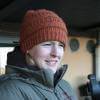





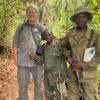
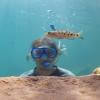

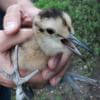





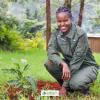
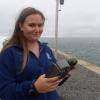
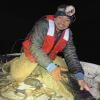

5 April 2024 12:31pm
Sound deterrents to prevent collisions with Kangaroos in Australia have been sold for many years. None have been shown to work. Whether the Volkswagen device will be any better waits to be seen. Collision data will have to be collected for a while to see if the VW device has any effect on collision rate.